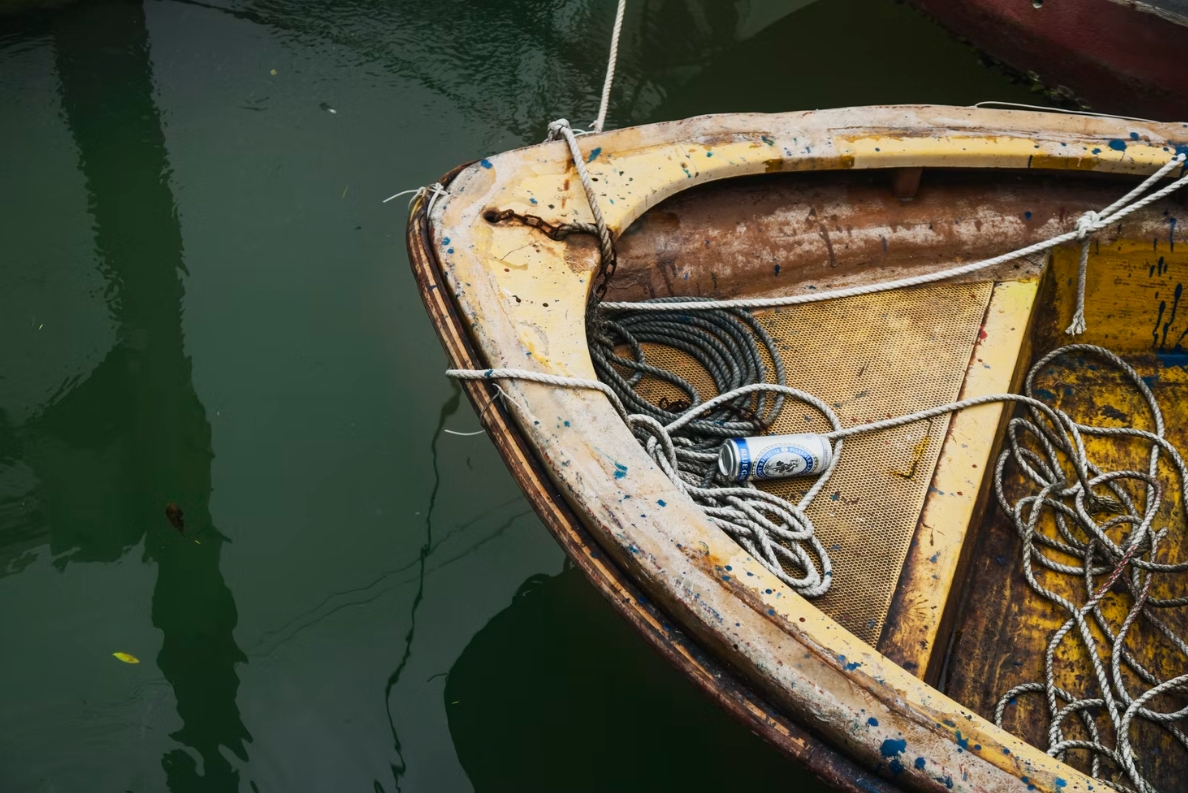
by Tom Pawlak — GBI Technical Advisor
Above: Decayed wood on a small boat. Photo by Chester Ho on Unsplash
Sodium borate is used in a number of commonly used household products from laundry detergent to hand soap. It is also used to treat wood against insect and fungal attacks. Sodium borate is refined from borax, a natural mineral, which is mined throughout the world. One of the largest deposits is in the Southwestern United States. (Think 20-Mule Team Borax™, Death Valley Days radio and TV shows).
For years, sodium borate has been used in New Zealand to protect construction timbers for new homes against termites. Borate-treated lumber is now available throughout the US and Canada. Sodium borate is environmentally friendly compared to many penetrating wood preservatives used in the lumber industry. It works by poisoning the food supply for insects and decay fungi that ingest it.
Borate salt can also be used to treat rot-damaged timbers on existing structures prior to doing structural repairs. Borates used for treating wood are available in two forms: as dry powders, which are often dissolved in warm water prior to use, and in liquid form with the borate salts pre-dissolved in a liquid. The pre-dissolved types are often petroleum-based liquids involving glycols. The benefit of petroleum-based treatments is that they are less prone to leaching out of the timber if the treated wood is exposed to flowing water over time. Unfortunately, petroleum-based products, especially those involving glycol, can cause poor adhesion for adhesives used in the restoration.
If you are interested in treating rot-damaged wood with sodium borate prior to consolidating with epoxy, you will want to apply a water-based solution made with dry borate salt and warm water. Borate salts can be difficult to find, but we found an excellent source that ships quantities as small as one pound anywhere in the U.S.
Schroeder Log Home Supply in Grand Rapids, Minnesota sells a dry borate salt called PeneTreat™. Their phone number is 218-326-4434. PeneTreat is intended to be dissolved in water to create a working wood preservative solution. We tested adhesion to wood surfaces treated with PeneTreat using WEST SYSTEM® epoxy with a PATTI (Pneumatic Adhesion Tensile Test Instrument) and found no measurable loss of adhesion when compared to similar wood surfaces that were untreated. Water-based borate treatments are odorless and do not affect the natural color of the wood. Borate-treated wood does not corrode metal fasteners like some wood treatments do.
Borate salt solutions are applied with a pressurized deck sprayer or by brush. Ideally, the bulk of the rot is excavated prior to treatment. Absorption of the salt solution is enhanced if the wood is warmed slightly just prior to applying the solution. Warming the area causes air inside the wood to expand, which helps the treatment to be drawn into the wood as the wood cools and the air shrinks. Drilling small holes to act as channels helps deliver the liquid deeper into the decay and the holes act as reservoirs and help the area be thoroughly saturated. Usually, two treatments are applied within 4 to 24 hours of each other. Treated sections need time to dry before epoxy-based repairs can begin. Sanding dust from treated surfaces roughed up with coarse sandpaper should feel dry to the touch before epoxy-based repairs can begin.
One of the rubs against water-based borate salt treatments is that the sodium borate can leach out over time if water repeatedly flows by the treated areas. Sealing the area with multiple coats of paint or other sealer products will trap it in the wood. WEST SYSTEM Epoxy applied to treated areas effectively traps the treatment in the wood due to the epoxy’s excellent moisture barrier qualities. It may even help the borates to diffuse deeper in the wood because the chemical remains mobile as long as moisture is present inside the wood. Once the treated wood is sealed, the borates are trapped inside where they continue to offer protection against attack.
NOTE: Diffusion of the borate salt begins immediately upon application and continues for several days. Pre-existing insect larva and decay fungi may not be killed during the treatment process, but survivors die when they ingest the treated wood.





